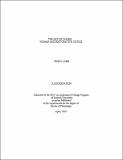| dc.description.abstract |
The process of restorative justice involves the caring compassion of others by providing support for the peaceful resolution of the conflict. The term restorative justice is used to describe a justice practice that has been in existence for hundreds of years in many indigenous communities. Recently, it is emerging in modern criminal justice systems as a way to obtain fair reparation for the victim and to offer an opportunity for the victim and the offender to mediate and reconcile after the offense to restore balance and peace to the community. The process involves the participation of the victim, offender, and selected community members in all phases of the process. Restorative justice requires community involvement, thus encouraging community building, empowerment, and capacity enhancement. It can be adopted as a proactive method for preventing wrongdoings and misbehavior. Care theory supports the ethic that all individuals are responsible for meeting the basic needs of others. Its premise is based on the fact that we are all interconnected, and therefore, obligated to ensure all humanity has the basic necessities and the capacity to live a meaningful life. Care theory supports the tenets of restorative justice. The obligation to care involves ensuring the well being of all individuals including the fair treatment and the rehabilitation of those who have been victimized. The focus moves from punishment of the offender to restitution and reparation of harm for the victim. Restorative justice can be the modern model for conflict resolution. In this theoretical dissertation, I will present documentation to support my thesis that adopting the tenets of care ethics and restorative justice and recognizing the value of women's voices (specifically in matters of social and global justice) will provide a holistic and reconciliatory process for justice, a recognition for the need to be concerned for all of humanity, and a renewed commitment to establishing a sustainable world. The electronic version of this dissertation is at OhioLink ETD Center, www.ohiolink.edu/etd. |

